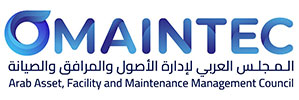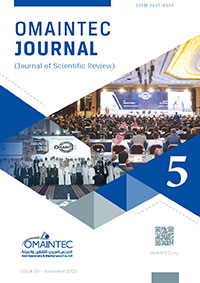Biju Reghuvaran, Bassel Azzam
King Abdullah University of Science and Technology, Thuwal, Saudi Arabia biju.reghuvaran@kaust.edu.sa
Advanced World Trading, Riyadh, Saudi Arabia b.azzam@awt-med.com
November 2022
Abstract #
The aim of this document is to demonstrate the analysis done to identify building envelope issues and adaptation of latest technologies by maintenance team to seal gaps effectively thereby significantly reduce leakage of conditioned air from the buildings. This is a new approach to rectify the gaps in the building that are mostly invisible to the naked eye and enables to measure the leakage before, during and after the sealing activity. Airtightness of buildings are essential to reduce carbon footprints especially when the buildings leak large quantities of conditioned air besides letting in unconditioned humid air causing additional cooling load to the buildings. Adaptation of new envelope sealing technology had enabled our Supercomputer facility building in KAUST to save energy significantly as well as reduction in deterioration of assets.
Key Words
Maintenance, Carbon footprint, Energy savings.
1 Introduction #
The King Abdullah University of Science and Technology (KAUST) in Thuwal, Saudi Arabia offers state-of- the-art facilities, expert academic staff, and a world-class curriculum. These are among the reasons why KAUST is one of the fastest growing research universities in the world with a high-quality research output ranked globally among its peers.
Located on the Red Sea, facilities across its core campus have always been challenged with extreme weather conditions since opening in September 2009. KAUST has tried multiple options to eliminate these issues.
The Al Khawarizmi building on the KAUST campus (Fig. 1) includes the university’s Supercomputing Laboratory, home to the region’s top performing supercomputer. Ranked as one of the world’s fastest, KAUST’s Shaheen II Cray XC40 supercomputer houses computing clusters for scientific and engineering research. Shaheen also services industrial, governmental, and other educational institutions both within the Kingdom and internationally.
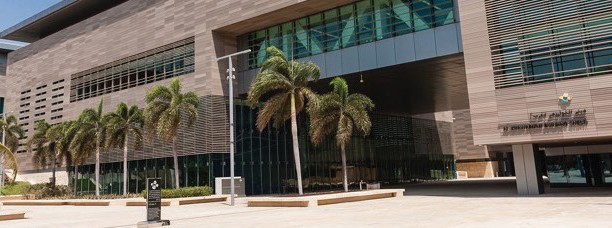
Fig 1. Al Khawarizmi Building at KAUST
Since the building opened, infiltration of humidity through the building envelope of its penthouse mechanical room was causing significant problems. Remedies carried out earlier had sealed visible openings in the envelope but there were several gaps that were either not visible or inaccessible to repair. Sensors and alarms were set off during the high humidity months, shutting down the mechanical equipment and triggering evacuations for the building’s occupants.
The Facility Management team at KAUST had spent significant time attempting to manually seal the mechanical room’s envelope, as well as analyzing air sealing methods that ultimately would interfere too much with the building’s operation, take too long, and cost too much.
Eventually, KAUST turned to AeroBarrier’s envelope air sealing solution to address the problem, along with Advanced World Trading (AWT) to implement the solution. AeroBarrier is a non-toxic, water borne acrylic GreenGuard Gold certified sealant.
2 Methodology #
2.1 Thorough Planning to Ensure Success
KAUST had conducted detailed thermal imaging of the building envelope to assess the extent of leakage (Fig. 2). There has been a limitation to pressurize the building as the leakage through bigger openings were significantly higher that masks the smaller openings. Intrusive methods of inspections were also conducted to assess the nature of the breaches in envelope, however, many areas were inaccessible due to concentration of utility networks especially HVAC ducting and electrical conduits.

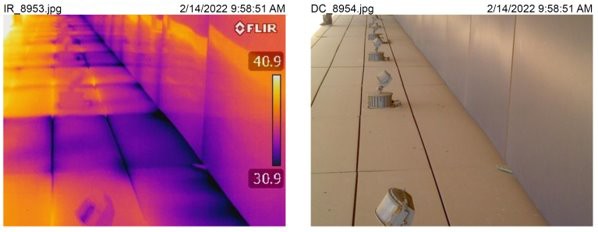
Fig 2. Thermal scan of Building Envelope
KAUST did an assessment of mechanical sealing of envelope but concluded that manual sealing will not seal the envelope to achieve required air tightness. This had prompted KAUST to search for new methods and technologies that will enable sealing with little or no impact on the building operation or occupants and at the same time durable, efficient, and economical.
Aeroseal technology was used in KAUST earlier for sealing the leakage of HVAC ducts and had provided good results. KAUST also learned about another product from the same manufacturer, Aerobarrier, which was being used for sealing the buildings in the Unites States. The technology, however, is new to the Middle East and application to a larger enclosed area in the range of 68,000 sft. was never tried before.
A team from KAUST, AWT Services, and AeroBarrier conducted careful planning prior to the start of air sealing to ensure the project’s success. The large area of building envelope surrounding the 457’ x 150’ mechanical room (Fig. 3) needed to be sealed.

Fig 3. Layout of Mechanical Room at level 5
Considering unique exterior wall construction and campus site constraints, a detailed air sealing plan needed to be developed in advance of being on site to do the actual air sealing work. The team planned to air seal the mechanical room’s exterior walls in segments, with the north, south, and east walls each subdivided differently based on their construction. The west wall is constructed of solid block and didn’t need to be sealed.
Third party exterior thermal imaging assessment and visual inspections showed previous, manual seals of leaks and pipe penetrations were shearing. Further a few gaps in the exterior wall less than 1.2cm (0.47”) in size were also found. The plan of execution was to seal the space between the vapor barrier and inner gypsum wall thereby ensuring airtight chamber around the building. Team performed initial blower door tests which showed leakage as high as 60 ACH50 in some segments of the building envelope.
2.2 Flexible Technology and Team Navigate Unique Building and Site Challenges
The building envelope construction of the building’s mechanical room, as well as the building’s location on the KAUST campus presented some challenges that were successfully resolved through key advantages provided by the air sealing system.
- Air sealing without the need to remove the terra cotta panels used as the mechanical room’s exterior finish (Fig. 4).

Fig 4. Exterior wall of Mechanical Room
- Placing sealing stations so that their atomized sealant spray did not get into the mechanical room’s interior, air handling units, and ductwork.
- Air sealing around several HVAC motor control center (MCC) panels. These clusters of electrical and control pipes required special attention and preparation as part of the air sealing process.
- Conducting the air sealing while ensuring that sealant and debris didn’t fall onto a major pedestrian circulation spine underneath and near the building.
- Working around the university’s high traffic periods and not creating any disruption to the building’s occupants’ work schedules.
- Shorter duration of the rectification works compared to the traditional methods of sealing the envelope.
-
2.3 Applying Sealant Within the Exterior Wall Cavity
Air sealing system pressurizes a space using a blower door and fan, then sprays an atomized sealant mist into that space, causing the sealant to follow the pressurized air escaping through leaks in the building envelope and sealing those leaks. Since avoiding contact between the atomized sealant and the mechanical room equipment was critical, the cavity inside the exterior wall was pressurized and sealant was sprayed directly into the wall cavity to accomplish the air tightness goal for the mechanical room building envelope (Fig. 5).
Due to its size, the exterior envelope was sealed in smaller segments. Two different types of sealing station placements were used to seal from the inside of the exterior wall cavity, leveraging the team’s creativity and technical expertise.
Temporary access panels were cut through the interior finish drywall to provide access into the confined space of the wall cavity for further inspection, setup, and preparation work to be carried out, and ultimately to provide access points for the blower door and sealing stations.
For each segment of the envelope, the blower door was then placed into a temporary access panel to pressurize the wall cavity (Fig. 5). Most segments of the envelope were sealed by then deploying sealing stations against the interior face of the exterior wall at these access panels while inserting the spray nozzles inside the cavity and then spraying the sealant mist directly inside (Fig. 6).


Fig 5. Pressurizing exterior wall Fig 6. Sealing Station
In a small number of envelope segments, the wall cavity was deep enough to place the entire sealing station inside the wall so that sealant could then be sprayed into the pressurized cavity (Fig. 7). The unique sealant technology and capabilities enabled this customized envelope air sealing approach.
An additional area included a series of control panels that controlled the mechanical equipment, and many conduits that were not possible to get in between and behind to seal the exterior wall. The team successfully sealed this area by constructing temporary walls of framing and plastic film to both pressurize this space and protect the control panels during the sealing process (Fig. 8).


Fig 7. Sealing station Fig 8. Sealing inaccessible
inside Exterior Wall areas behind conduits
The monitoring system included a Main Control Unit, laptop and software managed the entire process, recording air tightness and leakage reduction in real time.
3 Results #
3.1 Verified Air Sealing Results Lead to Energy Savings, Broader Application
Working together, the team achieved airtightness levels below 3 ACH50, a 94% reduction in the mechanical room building envelope air leakage (Fig.9). An estimated $126.8K in annual operational savings are being realized through reductions in both university staff’s time responding to sensor alarms and sealing envelope air leaks, as well as the elimination of the building evacuations that had caused reductions in productivity for staff working in the building.

Fig 9. Sealing report of Section 9
These results were achieved with no damage to the HVAC equipment and minimal disruption to building occupants, operations, and the surrounding campus. The building envelope was successfully sealed in less than two months, a dramatically shorter project than the 10-12 months that would have been needed with other air sealing methods.
4 Conclusion #
The unique air sealing approach using waterborne acrylic sealant was a breakthrough as it reduced the cost and time for rectification of the air leak and infiltration through the building envelope. The effectiveness of the material in reaching and sealing the inaccessible and tiny gaps had a 94% improvement in the air tightness and the value of 2.2ACH50 was achieved (against target value of 3.0 ACH50 as per IECC standards) for all sections of the building envelope in the penthouse floor of the building. There has been a remarkable improvement in the condition of the space – elimination of space condensation, savings in energy and elimination of business interruptions.
4.1 Post Sealing Observations
Condensation during humid months July – September 2022 was not observed in the mechanical room unlike in the previous years. There was a considerable reduction in cooling demand for the space. Thermal scan results after the sealing confirmed the envelope tightness as there were no cold spots observed in the scans (Fig. 10).

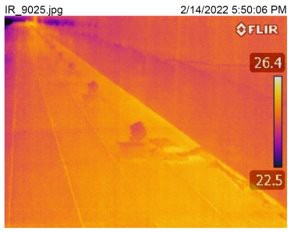
Fig 10. Thermal scan results after sealing
Acknowledgements #
AeroBarrier envelope sealing technology is a breakthrough when it comes to sealing the building envelope, allowing contractors to literally dial-in desired airtightness. AeroBarrier replaces inconsistent, unreliable manual air sealing with an automated process that delivers guaranteed results.
Advanced World Trading (AWT) is an installer of AeroBarrier in Saudi Arabia and specializes in indoor air quality (IAQ) management and infection prevention. AWT was very professional in their approach in planning and timely execution of the project. The project was completed in two months’ time without causing any adverse impact to the functional building.
References #
Reghuvaran Biju, Shadid Bill “Leading Research University in Saudi Arabia Protects Scientific Computing Center with AeroBarrier”, Article in Linkedin.
AeroBarrier commercial case studies (Biju Reghuvaran, 2022)

